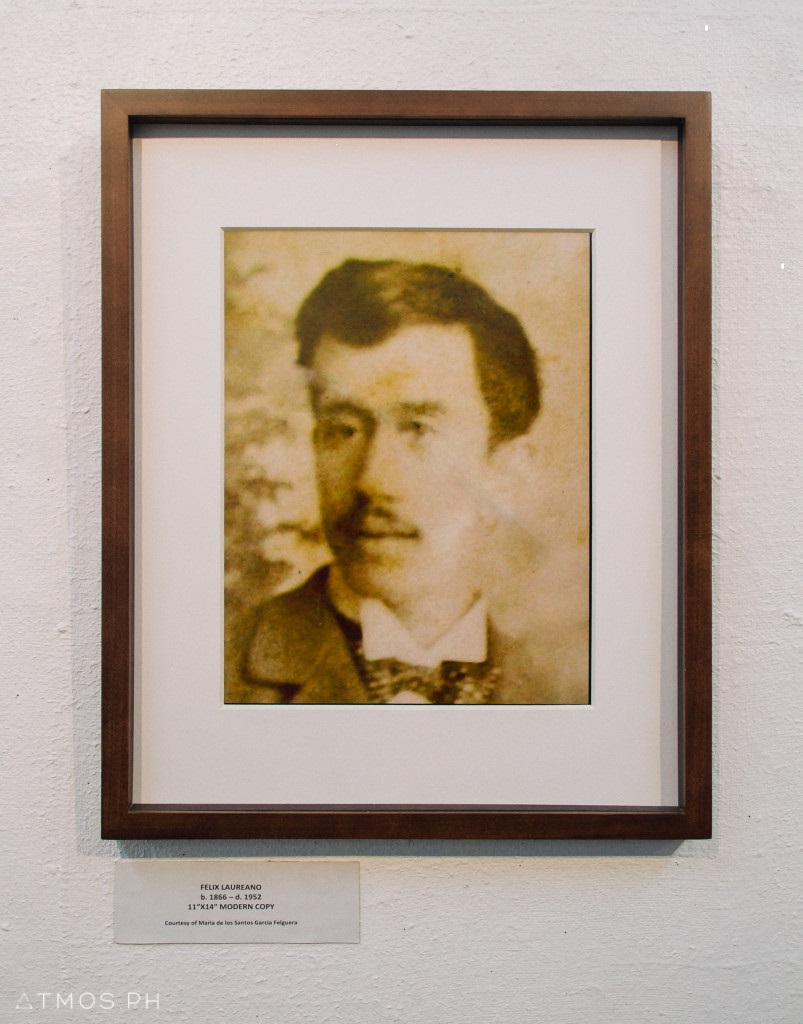
Who is Felix Laureano?
A Canada-based historian’s quest to find out more about Felix Laureano led him into the archives of Spain, in several summers. It all started when Francisco G. Villanueva first saw an old photograph of Iloilo City by Laureano. Intrigued by the photo of Iloilo, his hometown— Frank decided to learn more about Laureano. Was he a Spaniard based in Iloilo?
Researching on Laureano’s life since 2010, Frank G. Villanueva gave an opening talk on the photographer’s life, as the exhibit curator. It marks the opening of an ongoing exhibition at the National Mueseum Western Visayas entitled Bugasong to Barcelona: Life and Works of Felix Laureano, the First Filipino Photographer.
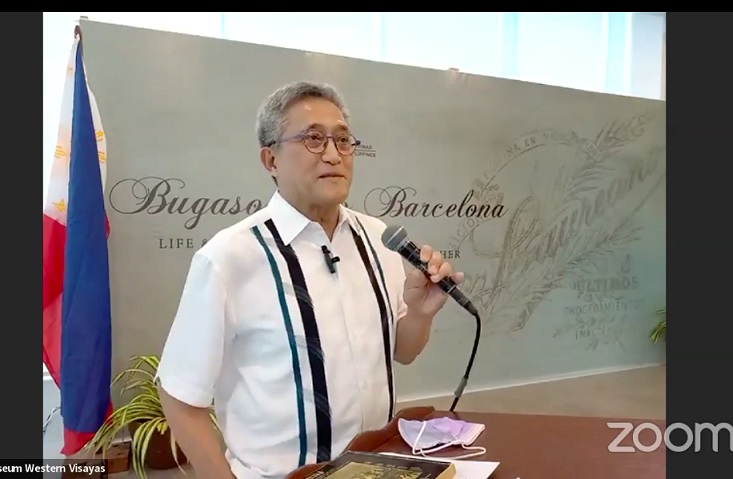
Recuerdos de Filipinas
In 1895, Laureano published Recuerdos de Filipinas in Barcelona, with 37 collotypes and accompanying essays mostly on Iloilo, Panay, and some parts of Luzon during the last years of the Spanish colonial period. Dedicated to the painter Juan Luna, it is considered to be the first photobook by a Filipino.
(See a digitized copy: https://digital.library.villanova.edu/Item/vudl:395103)
At the 1895 Exposicion Regional de Filipinas in Manila, Laureano’s book and other photographs were exhibited.
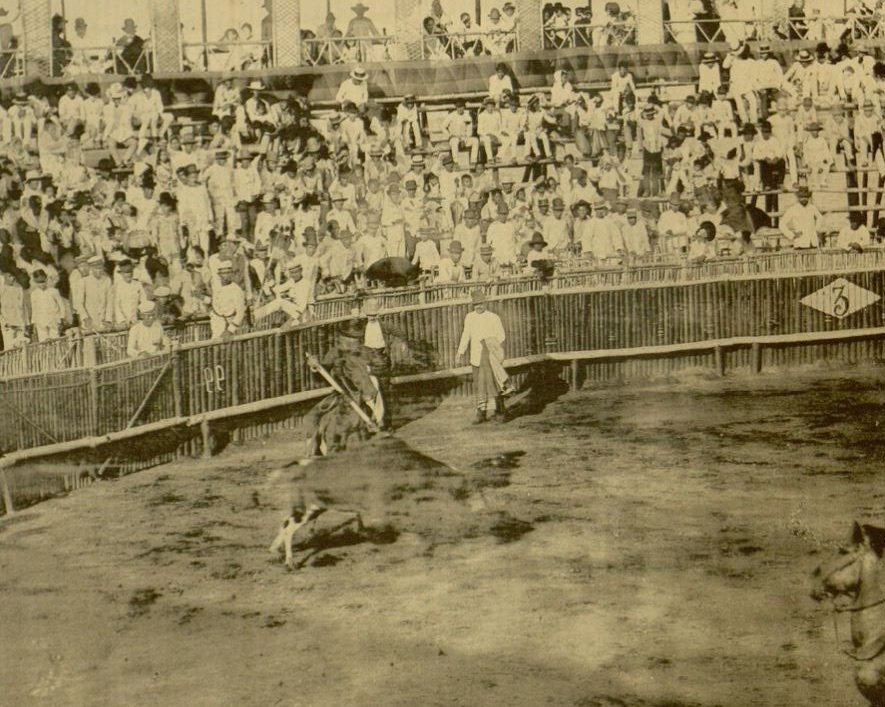
2001 Edition
It was translated and edited in English in 2001 by Felice Noelle Rodriguez, Ramon Sunico, and Renan Prado, and titled “Memories of the Philippines—A tool for the study and understanding of the ways and customs of these islands, with 37 collotypes taken and copied from real life.”
In 2015, Villanueva finally got a copy of Laureano’s photograph, sent by Laureano’s grandniece to a Barcelona professor, Maria de los Santos Garcia Felguerra, Villanueva’s research collaborator.
Panay by Felix Laureano
Laureano’s essays contextualize the customs and habits of Filipinos in Iloilo. It also displays a quite familiar knowledge of the geographic contours of the island. He also includes some Hiligaynon words and phrases interspersed with Spanish text.
Fourteen (14) of the 37 photographs pertain to Panay: the rivers of Bugasong and Jalaud, the slopes of Ulian and Tagbacan, the Muelle or pier area, the Jaro Cathedral and the old Oton Basilica destroyed by a 1948 earthquake, and the clean and wide streets of Iloilo—Calle del Progreso (De la Rama Street) and Calle Iznard (Iznart Street). Everyday life and its social connections are seen in a wedding and funeral; pounding palay or chopping wood; wooden carts pulled by carabao; river scenes where women and children bathe, wash clothes, and gossip; fairs and markets or tiangui, and the Jaro market day of Thursdays (Huevesan) that continues to this day; festivals and events such as the Sinulog, Ati-Ati, or even a corrida or bullfight at Plaza de Iloilo, one of the only two bullfight rings in the country, after Manila.
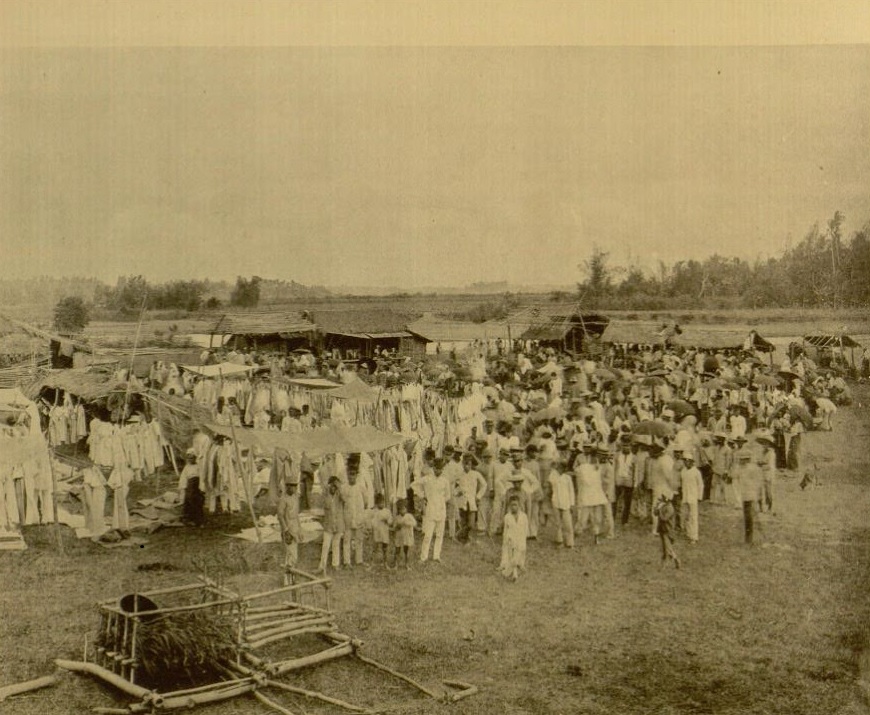
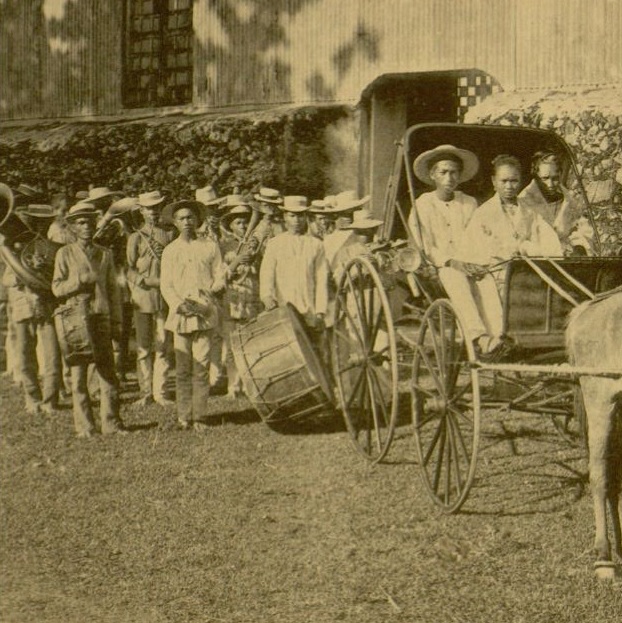
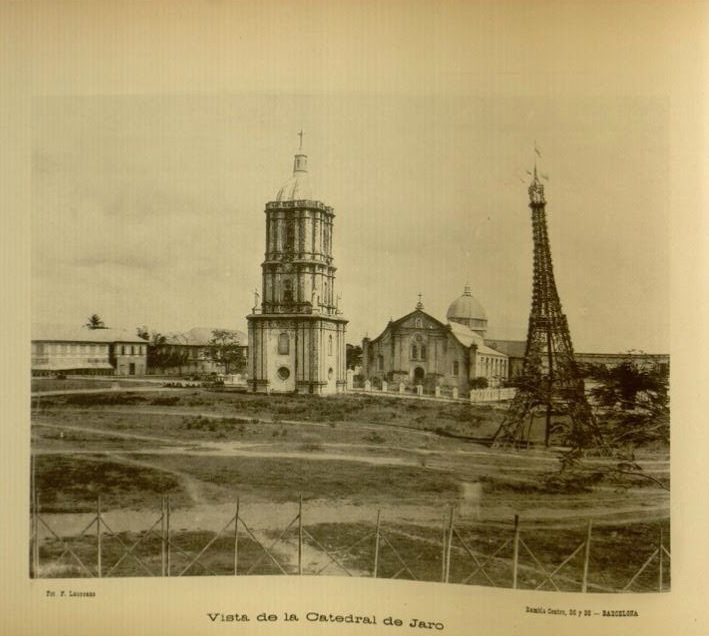
Felix Laureano (1866-1952)
Born in Patnongon, Antique in 1866, the son of a wealthy widow, Norberta Laureano de los Santos and an Augustinian priest, Manuel Asensio (1833-1910) of Zamora, Spain. With his four other siblings (Santiago, Vicente, Jesus, and Maria), they grew up in Bugasong, Antique where their father was the parish priest since 1860.
At 17, Laureano attended the Ateneo Municipal de Manila in 1883 for two years. By 1886, he opened his first photo studio in Calle Iznart, Iloilo. While not much is known on how Laureano learned photography, Villanueva notes that he may have apprenticed himself to a master photographer in Manila.
International Expositions
At 21, he participated with 40 photographs of “Visayan scenic views and types” at the 1887 Exposicion General de Filipinas in Madrid, and received an Honorable Mention. The next year, at the 1888 Exposicion Universal de Barcelona (the first international exhibit in Spain), he received another Honorable Mention.
Travelling around Europe, Laureano studied the latest developments in photography in Paris and attended the 1889 Universal Exposicion where the Eiffel Tower was launched.
Between 1892 and 1901, Laureano opened three studios in Barcelona; in 1892, he opened his portrait studio Gran Fotografia Colon in Las Ramblas, one of the main commercial streets of the city, like Manila’s Escolta.
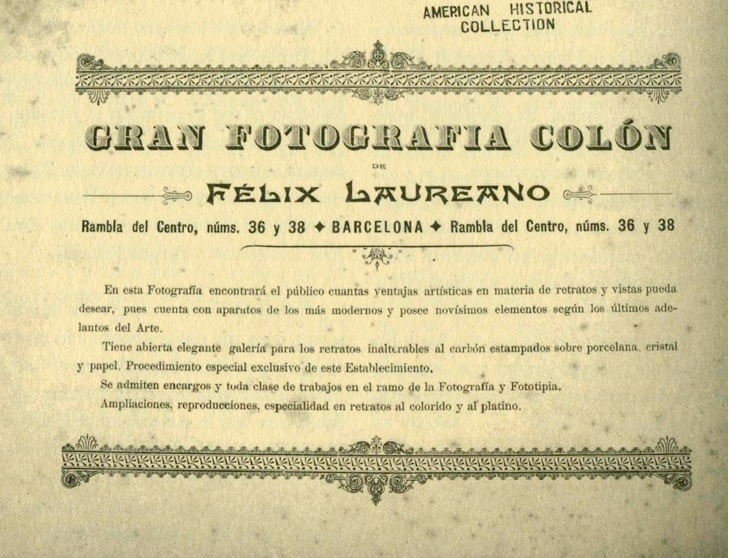
It says “it accepts works in fototipia (collotype), photo miniatures, opaline, photos on porcelain, enlargement in all sizes and numerous works now known for their precision and accuracy.”
La Solidaridad congratulated him for his studio opening in 1893.
Fototipia (collotype) is a gelatin-based photographic process invented in 1855 and started to be used in Spain during the early 1870s, becoming popular by the end of the decade.
By 1896 until the end of the century, Laureano’s works as a professional photographer began to appear in various publications in Spain, such as La Ilustracion Artistica, La Ilustracion Española Y Americana, and Panorama Nacional. Two of his colored photographs appeared in an 1899 issue of Album Salon, the first Spanish illustrated magazine in color.
Laureano’s brother and sisters returned to the Philippines after the Spanish Civil War (1936-1939) and lived in Iloilo City; later, they moved to Manila where Laureano at the age of 86 died on December 18, 1952 at the Hospital Español de Santiago in Makati.